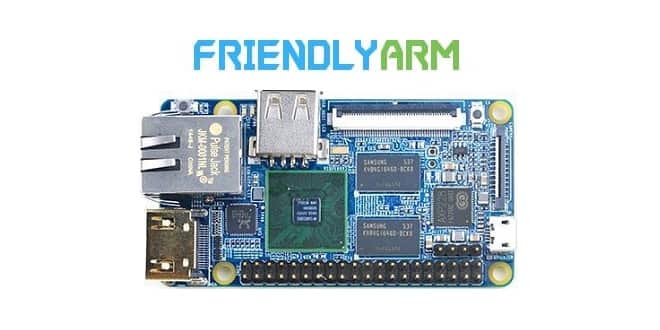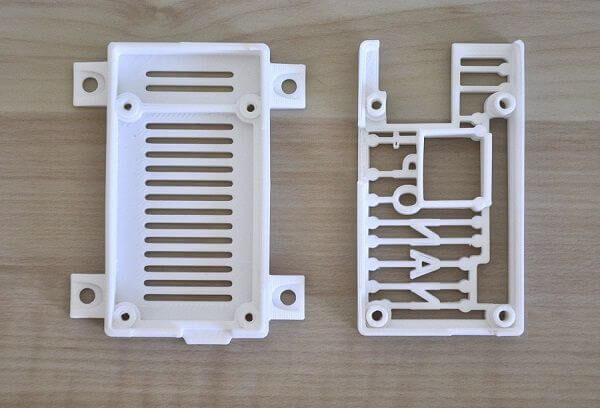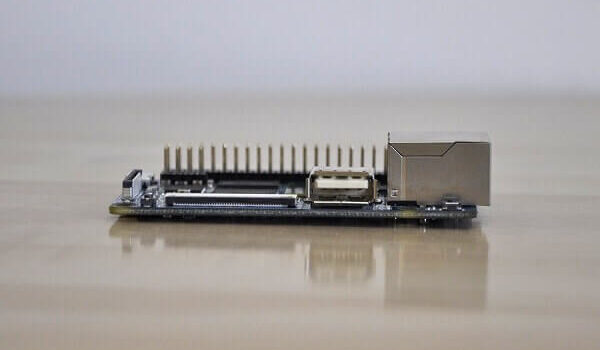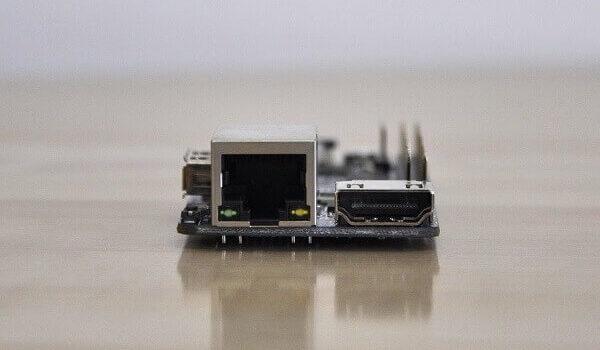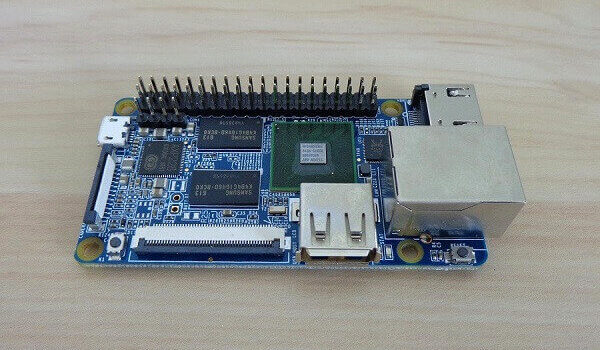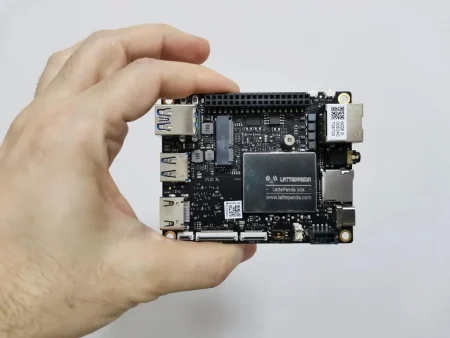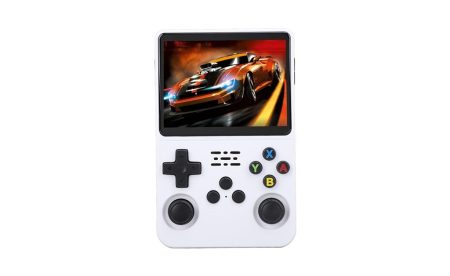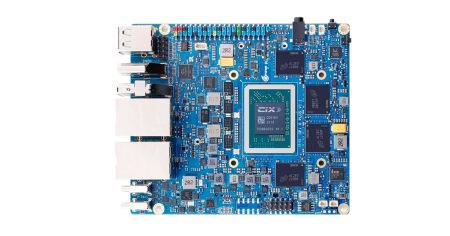NanoPi 2 Fire
The NanoPi 2 Fire is a high-performance ARM Board designed for Hobbyists, Makers, and Hackers for IoT projects, developed by FriendlyARM company. It features Samsung’s Cortex-A9 Quad-Core S5P4418 1. 4GHz SoC and 1G 32bit DDR3 RAM. It has a built-in Gigabit Ethernet port. You can load Android and Debian system images from a TF card. The board integrates both HDMI and LCD interfaces along with a 40 pin GPIO pin header, compatible with Raspberry Pi’s external GPIO modules, including Arduino’s shield boards.
Measuring a mere 75 x 40 mm, this compact device is not only budget-friendly at just $28 (excluding shipping) but also boasts a faster processor than the Raspberry Pi 2 Model B. For comprehensive information, feel free to visit the FriendlyARM website using the link provided below.
Buy It Now on FriendlyElec Website
NanoPi 2 Fire | Back View
Specs
| Processor | Samsung S5P4418 Quad-Core Cortex-A9, 400Mhz 1.4GHz |
| PMU Power Management | AXP228, supports software power-off, sleep, and makeup functions. |
| System Memory | 1GB 32bit DDR3 RAM |
| Connectivity | Gbps Ethernet Port (RTL8211E) |
| USB | 1 x USB Host 2.0 Type A, 1 x Micro USB for data transmission and power input |
| Storage | 1 x Micro SD Slot |
| LCD | 0.5 mm pitch 45 pin FPC seat, full color TFT LCD (RGB:8-8-8) |
| HDMI | 1 x HDMI 1.4A Type A, 1080P |
| Camera | 0.5 mm pitch 24 pin DVP FPC seat |
| GPIO | 40 pin, 2.54 mm pitch pin header compatible with Raspberry Pi 2’s GPIO pin header |
| OTG | 1 x Micro USB for power input |
| Debug Serial Port | 2.54 mm pitch 4 pin header |
| User Key | K1 (power key), Reset |
| PCB Dimension | 75 x 40 mm, Six-layers PCB |
| Power: | DC 5V/2A |
| OS/Software | u-boot, Android 5.1, Debian Jessie 8 |
Optional Accessories
FirendlyARM offers few optional accessories for their NanoPi M3 that are not included in the default package that only contains the development board. The White 3D Printed Housing (Case) comes in handy if you need to mount the unit with a set of 4 screws. My experience in assembling the two parts of the case wasn’t so great to say the least. The upper part where the processor sockets are located was smaller in dimensions which made it almost impossible to close the two parts together, even with provided screws and excessive force the parts didn’t fit well.
NanoPi 2 Fire 3D Printed Housing
- Reset
- USB Host
- LCD
- Power
- Camera
- TF Card (Back)
- Micro USB
- Debug UART
- AXP228
- 1GB RAM
- GPIO
- SP4418
- RTL8211E
- HDMI
- 10/100/1000Mbps Ethernet
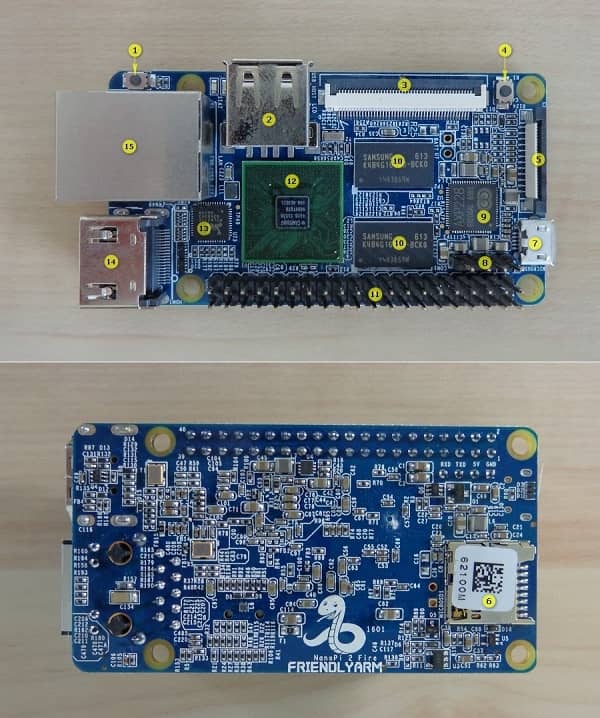
Hardware Platform
The NanoPi 2 Fire Hardware is powered with a Quad-core 5P4418 32 bit Samsung Cortex-A9 Processor. FirendlyARM redesigned the board with onboard Gigabit Ethernet port at the expense of the onboard WiFi Chip, making the product more cost-effective vs. the previous Nano Pi2 model.
Due to the compact size of this board, only 40 x 75 mm unit doesn’t have a built-in WiFi module and comes with only one USB V2.0 Host that could be a bit limiting if you are not using a mini USB Hub. If you still need WiFi support you can do it by buying a USB WiFi Adapter and installing provided vendor drivers.
The Board comes with AXP228 PMU advanced power software power-off, sleep, and wake-up features. Although in normal standard operation (depending on CPU load) Processor heats up but still works well it’s very recommended investing few dollars and buying an aluminum/copper heat-sink.
NanoPi 2 Fire | Full View
NanoPi 2 Fire dimensions | 40 x 75 mm
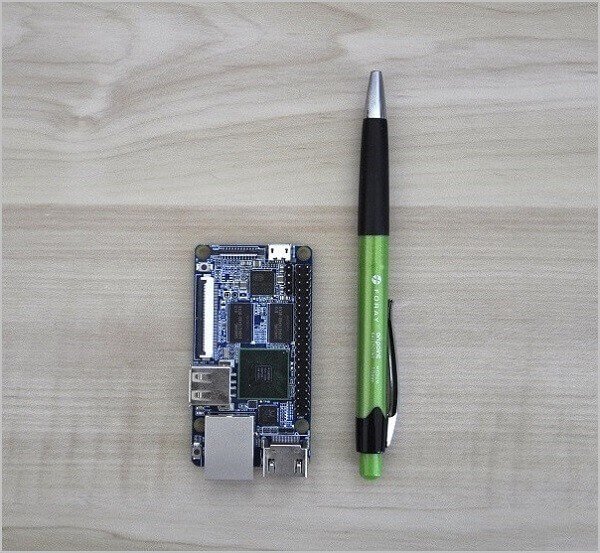
CPU Temperature
On moderate usage, depending on the CPU workload. I was still able to run and operate an Ubuntu MATE system without any crashes at relatively high temperatures ranging between ~72 – 85C.
Software
You can find few Linux distributions for the NanoPI 2 Fire such as Kali Linux, Ubuntu MATE, and Arabian Linux at FriendlyARM Wiki pages. From my personal impression, FirendlyARM has much to improve and offer wider image support for more Operating systems.
NanoPi 2 Fire Hands-on Review
Final Words
excluding my bad experience dealing in trying to assemble the 3D printed housing (case) parts, the NanoPi 2 Fireboard performed well and stable. Software support was less great and needs further improvements, but the good news is that FriendlyARM is currently working on developing new images such as Arabian Linux distribution and maybe others. The bottom line, if you are looking for a very compact board for running Linux distributions, then this product does the job well for a retail price of $23 (including shipping).
Pros / Cons
Pros
- Small in Size: 40 x 75 mm
- External interfaces: LCD, GPIO
- On-board Gigabit Ethernet LAN Port.
- Good Performance
- Cost-effective.
- Good Stability.
Cons
- Limited software support / Availability (Images).
- No WiFi module on-board.
- No eMMC.
- Only one USB port.
Company Links:
- Company Page: www.friendlyarm.com
- Facebook: Click Here
- Forum: Click Here
- NanoPi 2 Fire: Click Here
- Housing CAD Files: Click Here
- Download Sources: Click Here
- Source Code: Click Here


